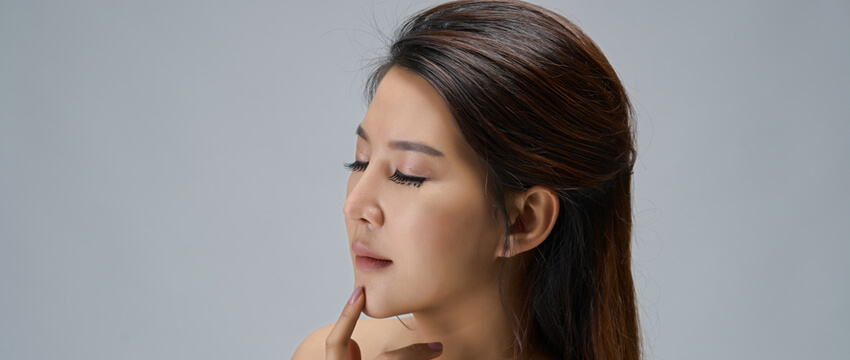Rhinoplasty, or a nose job as it is colloquially referred to, is a surgical procedure that is carried out to change the shape, size or position of the nose. It is one of the most popular cosmetic surgeries requested. Let’s find out what you expect from a typical rhinoplasty procedure.
Why Have Rhinoplasty Surgery?
Rhinoplasty can be performed for cosmetic and functional reasons. Patients may wish to change the size and shape of their nose, its width, the tip of the nose, improve nasal symmetry and change the shape of their nostrils.
Nose jobs for cosmetic reasons
Patients who have a nose job for cosmetic reasons may wish to
- Improve facial symmetry
- Make the nose bigger or smaller
- Correct asymmetry
- Remove bumps
- Make wide nostrils narrower
- Straighten the nose
Nose jobs to correct physical problems
Patients who want to correct physical problems do so because of
- Birth defects
- Breathing difficulties
- Injuries to trauma to the nose
- Damage due to infections or disease.
If you need nose surgery to repair a broken nose, your best plan of action is to get help immediately. If you don’t the resultant swelling can delay your surgery by up to five days.
Septoplasty
Septoplasty is a procedure performed to correct a deviated septum or the cartilage and bone that separates your two nostrils.
What Are The Risks Associated With Rhinoplasty Surgery?
All surgeries carry some element of risk. Your particular risks should be discussed with your surgeon prior to your procedure. Also remember that the anaesthetic to be used will also carry some risk, and this should be discussed with your anaesthetic prior to surgery.


- Chronic or severe pain
- Nosebleeds
- Numbness around your front teeth or nose
- An infection requiring further surgery or antibiotic treatment
- Scarring
- Darkened skin under your eyes
Of course, there is also the risk of going through the surgery and not being completely satisfied with the end result. This can be managed by thorough planning and discussion with your surgeon and ensuring you work with someone suitably qualified and experienced.
How To Plan For A Successful Rhinoplasty Procedure
Changing your physical appearance must be considered responsibly, so before you can even start discussing your options, your surgeon will first take a thorough medical history, conduct an examination and listen to your surgery goals.
Each rhinoplasty procedure must be planned carefully because one very minor change can make a significant difference to your appearance. Your surgeon will have a specific process to follow, but in general, these are the steps you can expect.
Your surgeon will tell you to avoid taking medication like ibuprofen or aspirin for two weeks prior to, and two weeks after, your surgery date. This is to manage your risk of bleeding.
Smoking can interfere with healing and recovery so it is highly recommended that you quit.
What To Expect From Your Rhinoplasty Procedure
Your rhinoplasty procedure will be carried out under general anaesthetic. Once the anaesthetic has taken effect, your surgeon will make an incision at the base of your nose, or inside your nostril.
Once the initial incision is made, your surgeon will work through your procedure, either introducing cartilage to build up your nose for a nose reconstruction or removing bone or cartilage to reshape your nose.
Once the surgery is completed your surgeon will replace your skin and tissue over the cartilage and close the area up with stitches. He or she will place a splint on the outside of your nose so that it retains its shape during the healing process. Bandages will be placed over it.
You will probably be able to take the splint and bandages off about seven days after your surgery. Your stitches will be removed four to seven days after the procedure.
Healing And Recovery After A Nose Job – What To Expect?
You can expect not to blow your nose for up to eight weeks after your surgery. Because you are healing, you should also avoid physical exertion such as heavy exercise and heavy lifting. Holding your head upright is recommended.
Your surgeon will give you specific care instructions, including when you need to return for a follow-up consultation. Remember to contact your surgeon immediately if you feel any unusual symptoms during recovery, such as pain and bleeding.
While your bandages will be removed after a week you may only go back to work a week or two later. You can expect to feel some discomfort for a few weeks following your surgery – a broken nasal bone can hurt for as long as eight weeks. We recommend you take at least two full days off on complete bed rest.
As your surgeon to make recommendations for pain management, as it is not advisable to take aspirin.
You can expect some swelling in the year after your nose job, and it may be worse in the mornings. And, while will be able to see what your nose looks like when the bandages are moved, your nose may take as long as a year to adjust fully.
Cold compresses can provide relief from swelling.
How Much Does A Nose Job Cost?
Each rhinoplasty procedure is based on your personal requirements, and yours can only be estimated once you have had a consultation with your surgeon.
The cost of your nose job procedure will include surgeon fees, hospital fees, and anaesthetic fees, as well as costs for medication, post-operative support and wound dressings.
Rhinoplasties that are performed for cosmetic reasons are not covered by Medicare; you would need to cover the cost of your nose surgery out-of-pocket.
Do you have questions about the rhinoplasty procedure and what you can expect after surgery? Please contact us for a convenient appointment: (02) 8599 7161.
- Note: Any surgical or invasive procedure carries risks. Before proceeding, you should seek a second opinion from an appropriately qualified health practitioner.





